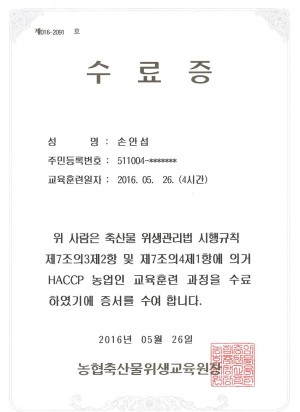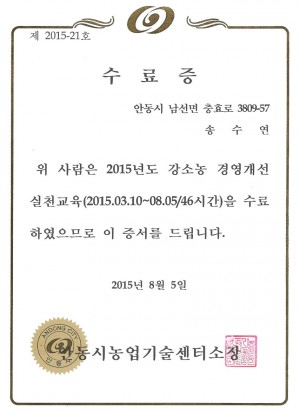[삼겹살]The Next Big Event In The What Are The 10 Innovative Technologies Indu…
166
2023.03.08 17:36
짧은주소
본문
What is Technological Innovation?
Many different definitions of technological innovation exist in the academic and business worlds. These include Process Innovation, Blockchain Technology and tech Medical Device Innovation. Each of these definitions is broad enough to encompass multiple understandings.
Process innovation
Process innovation involves the development and implementation of new methods and processes that are capable of delivering products or services of higher quality, lower cost and at a faster pace. It requires the integration of technology and skills, structures, and equipment. This innovative approach can improve an organization's competitiveness in market.
Process innovation could mean the development of a new distribution channel , or customer interface or a new product type. A new method of operation could be a catalyst for increased productivity. Another example is the use of technology in order fulfillment warehouses. For example, Amazon has used robots to help in its warehouse. These processes also allow companies to better serve their customers by leveraging real-time data.
In order to make process innovations successful, companies must change their behavior and processes. The goal is to improve the quality of services and products and provide a user-friendly experience. They must employ innovative techniques and technologies to achieve this objective. In the present competitive world innovation is crucial. Businesses will only be able to stay ahead by embracing innovation.
Process innovations can include a range of improvements, including new techniques for customer service, accounting, and software. They can also be utilized in the fields of facilities and human resources. Through implementing process improvement, companies will be able to increase their profits and create a more customer-centric organization.
One example of process innovation is the automation of replenishment orders. In the past individuals had to manually search through warehouses to find the amount of supplies they needed. This is time-consuming and labor-intensive. However, automated replenishment ordering can eliminate errors. It also reduces the chance of overstocking.
Companies can also utilize process innovation to adjust to market conditions. As technology becomes more advanced and processes are improved, they can result in new ways of producing products and delivery. These innovations will improve customer engagement and deliver superior products and services to customers. They also help save time and money.
For businesses to grow in today's market Innovation in process is a crucial element. It is crucial to remember that incremental improvements are not always worth the effort. It is not incremental improvements that will drive profit and growth but the introduction of meaningful, scalable changes.
Companies should take the initiative to create an innovation strategy. These strategies can help companies increase the effectiveness of their products and hwagyesa.org services while also improving their image. Innovative concepts are the only way to be successful on the modern marketplace.
Process innovation can be beneficial for any business, irrespective of the size. If it has enough reach to consumers, it can increase overall growth and create an advantage in the market. It isn't easy to plan and requires support from top-level management. Many companies employ process innovation strategies to maximize their growth.
Medical device innovation
Medical device innovation is all about improving patient health and wellbeing by utilizing new technologies. The world's healthcare industry has been shifting towards a more patient-centric model. This shift is creating significant economic benefits for society as well as patients. It also presents an opportunity for the medical device industry to leapfrog.
There are three main facets to innovation in medical devices. They involve patients as well as manufacturing and regulatory processes. There are many forces that can also affect the process.
The majority of medical device innovations are driven by users. They could be developers or implementers. Individuals who are able to bring their ideas to market are referred to as inventors. Academic institutions usually lack the required knowledge to make the technology viable. Many academicians don't know how to translate the commercially relevant knowledge into a practical clinical application.
Innovation can also be multi-dimensional. It involves replacing or upgrading existing devices. It also involves the creation of new products and services that are both complementary or therapeutic. These are often incremental improvements to an existing product.
Numerous countries have developed programs to encourage innovative industrial development that is competitive. These programs include federal funds for appchin.com R&D, product development and market research. Biotechnology is developing connections with the medical devices industry. These ties could be as diverse as sponsored research to venture capital and can be as strong as alliances.
Larger companies can provide numerous advantages to the medical device industry. They have the manufacturing capacity as well as a wealth of resources and understanding of regulatory issues. They might not be the top innovators of new medical devices, but. In this regard, explicit policy attention to strengthening these relationships between large and small companies is justified.
The medical device regulatory framework devices should be able to accommodate the cyclical and iterative nature of the business. They should account for the inevitable cycles of prototyping and testing that will take place throughout the life cycle of a product. Strategic alignment among the participants is essential to the success of innovative medical devices.
Smaller companies are usually early-stage innovators. Typically, these companies are identified with an entrepreneurial spirit and a dedication to early marketing. Although they may lack a well-established manufacturing capability, they often contribute to the development of new medical device designs due to their access to the technical knowledge.
The medical device industry is not a benefit of patenting, unlike other industries like pharmaceuticals. This makes it harder to assess the potential value of an invention. While a new device with minimal clinical benefits may not be a wise investment however, a single breakthrough technology could lead to dramatic health improvements. Therefore, healthcare providers and other stakeholders often look to confirm laboratory studies and clinical trials.
Blockchain technology
Blockchain technology is a technological innovation that lets people transfer money and other valuables safely and safely. This technology is able to transform the way business is conducted. Among other uses, it could be used to improve the quality of patient records and decrease the amount of time it takes to pay for claims. In fact, some companies are already implementing blockchains to improve their operations. However, the technology requires time to develop before it can truly transform the world.
The base technology is an immutable, ledger that keeps track of all transactions within the network. It does this using a method known as hashing. Every transaction is stored in an encrypted block which contains the time stamp and a digital signature. These blocks are then sent across the network and connected to the previous blocks. It is extremely difficult to modify the past information.
The first time blockchain technology was used was in the digital currency market. The technology allowed customers to buy pizza or space flights as well as other products without having to utilize traditional financial institutions. However, entrepreneurship today, blockchain is also being used by other industries. A company could make use of blockchain to track details about a vehicle. They can also use it to track food products, providing the capability to track contamination outbreaks.
Blockchain technology is a part of an ecosystem of advanced technologies, including robotics, artificial intelligence, and crowdsourcing. This ecosystem will eventually play a central role in the way society functions.
Blockchain technology has a myriad of key advantages. It is decentralized, which enables it to work peer-to peer. This minimizes the risk of third-party fraud. Since there is no central authority in charge of the system, it could also reduce many of the expenses involved in processing payments.
Another benefit of blockchain is the speed at which transactions can be completed. When you make a payment through a traditional bank, it could take days to settle. This is especially true when you are transferring money abroad. With Blockchain, transactions can be completed in less than 10 minutes. This is a huge advantage for both businesses and consumers since it can save them time and money.
Although blockchain isn't the perfect solution to every challenge it faces, it's an exciting technological development which will eventually aid in solving the trust issues that plague many organizations. It is being studied in other sectors including healthcare and insurance.
The algorithm SHA256 is a crucial component of the security of blockchain. It transmits transaction details and private key information. The algorithm that hashing is nearly impossible to hack. It is much more simple for authentication by the sender to take place when using a system based on SHA256.
Smart contracts are another potential application of blockchain. These are computer programs that facilitate negotiations on agreements and enforce compliance. Smart contracts can also be used to improve records.
Many different definitions of technological innovation exist in the academic and business worlds. These include Process Innovation, Blockchain Technology and tech Medical Device Innovation. Each of these definitions is broad enough to encompass multiple understandings.
Process innovation
Process innovation involves the development and implementation of new methods and processes that are capable of delivering products or services of higher quality, lower cost and at a faster pace. It requires the integration of technology and skills, structures, and equipment. This innovative approach can improve an organization's competitiveness in market.
Process innovation could mean the development of a new distribution channel , or customer interface or a new product type. A new method of operation could be a catalyst for increased productivity. Another example is the use of technology in order fulfillment warehouses. For example, Amazon has used robots to help in its warehouse. These processes also allow companies to better serve their customers by leveraging real-time data.
In order to make process innovations successful, companies must change their behavior and processes. The goal is to improve the quality of services and products and provide a user-friendly experience. They must employ innovative techniques and technologies to achieve this objective. In the present competitive world innovation is crucial. Businesses will only be able to stay ahead by embracing innovation.
Process innovations can include a range of improvements, including new techniques for customer service, accounting, and software. They can also be utilized in the fields of facilities and human resources. Through implementing process improvement, companies will be able to increase their profits and create a more customer-centric organization.
One example of process innovation is the automation of replenishment orders. In the past individuals had to manually search through warehouses to find the amount of supplies they needed. This is time-consuming and labor-intensive. However, automated replenishment ordering can eliminate errors. It also reduces the chance of overstocking.
Companies can also utilize process innovation to adjust to market conditions. As technology becomes more advanced and processes are improved, they can result in new ways of producing products and delivery. These innovations will improve customer engagement and deliver superior products and services to customers. They also help save time and money.
For businesses to grow in today's market Innovation in process is a crucial element. It is crucial to remember that incremental improvements are not always worth the effort. It is not incremental improvements that will drive profit and growth but the introduction of meaningful, scalable changes.
Companies should take the initiative to create an innovation strategy. These strategies can help companies increase the effectiveness of their products and hwagyesa.org services while also improving their image. Innovative concepts are the only way to be successful on the modern marketplace.
Process innovation can be beneficial for any business, irrespective of the size. If it has enough reach to consumers, it can increase overall growth and create an advantage in the market. It isn't easy to plan and requires support from top-level management. Many companies employ process innovation strategies to maximize their growth.
Medical device innovation
Medical device innovation is all about improving patient health and wellbeing by utilizing new technologies. The world's healthcare industry has been shifting towards a more patient-centric model. This shift is creating significant economic benefits for society as well as patients. It also presents an opportunity for the medical device industry to leapfrog.
There are three main facets to innovation in medical devices. They involve patients as well as manufacturing and regulatory processes. There are many forces that can also affect the process.
The majority of medical device innovations are driven by users. They could be developers or implementers. Individuals who are able to bring their ideas to market are referred to as inventors. Academic institutions usually lack the required knowledge to make the technology viable. Many academicians don't know how to translate the commercially relevant knowledge into a practical clinical application.
Innovation can also be multi-dimensional. It involves replacing or upgrading existing devices. It also involves the creation of new products and services that are both complementary or therapeutic. These are often incremental improvements to an existing product.
Numerous countries have developed programs to encourage innovative industrial development that is competitive. These programs include federal funds for appchin.com R&D, product development and market research. Biotechnology is developing connections with the medical devices industry. These ties could be as diverse as sponsored research to venture capital and can be as strong as alliances.
Larger companies can provide numerous advantages to the medical device industry. They have the manufacturing capacity as well as a wealth of resources and understanding of regulatory issues. They might not be the top innovators of new medical devices, but. In this regard, explicit policy attention to strengthening these relationships between large and small companies is justified.
The medical device regulatory framework devices should be able to accommodate the cyclical and iterative nature of the business. They should account for the inevitable cycles of prototyping and testing that will take place throughout the life cycle of a product. Strategic alignment among the participants is essential to the success of innovative medical devices.
Smaller companies are usually early-stage innovators. Typically, these companies are identified with an entrepreneurial spirit and a dedication to early marketing. Although they may lack a well-established manufacturing capability, they often contribute to the development of new medical device designs due to their access to the technical knowledge.
The medical device industry is not a benefit of patenting, unlike other industries like pharmaceuticals. This makes it harder to assess the potential value of an invention. While a new device with minimal clinical benefits may not be a wise investment however, a single breakthrough technology could lead to dramatic health improvements. Therefore, healthcare providers and other stakeholders often look to confirm laboratory studies and clinical trials.
Blockchain technology
Blockchain technology is a technological innovation that lets people transfer money and other valuables safely and safely. This technology is able to transform the way business is conducted. Among other uses, it could be used to improve the quality of patient records and decrease the amount of time it takes to pay for claims. In fact, some companies are already implementing blockchains to improve their operations. However, the technology requires time to develop before it can truly transform the world.
The base technology is an immutable, ledger that keeps track of all transactions within the network. It does this using a method known as hashing. Every transaction is stored in an encrypted block which contains the time stamp and a digital signature. These blocks are then sent across the network and connected to the previous blocks. It is extremely difficult to modify the past information.
The first time blockchain technology was used was in the digital currency market. The technology allowed customers to buy pizza or space flights as well as other products without having to utilize traditional financial institutions. However, entrepreneurship today, blockchain is also being used by other industries. A company could make use of blockchain to track details about a vehicle. They can also use it to track food products, providing the capability to track contamination outbreaks.
Blockchain technology is a part of an ecosystem of advanced technologies, including robotics, artificial intelligence, and crowdsourcing. This ecosystem will eventually play a central role in the way society functions.
Blockchain technology has a myriad of key advantages. It is decentralized, which enables it to work peer-to peer. This minimizes the risk of third-party fraud. Since there is no central authority in charge of the system, it could also reduce many of the expenses involved in processing payments.
Another benefit of blockchain is the speed at which transactions can be completed. When you make a payment through a traditional bank, it could take days to settle. This is especially true when you are transferring money abroad. With Blockchain, transactions can be completed in less than 10 minutes. This is a huge advantage for both businesses and consumers since it can save them time and money.
Although blockchain isn't the perfect solution to every challenge it faces, it's an exciting technological development which will eventually aid in solving the trust issues that plague many organizations. It is being studied in other sectors including healthcare and insurance.
The algorithm SHA256 is a crucial component of the security of blockchain. It transmits transaction details and private key information. The algorithm that hashing is nearly impossible to hack. It is much more simple for authentication by the sender to take place when using a system based on SHA256.
Smart contracts are another potential application of blockchain. These are computer programs that facilitate negotiations on agreements and enforce compliance. Smart contracts can also be used to improve records.















댓글목록
등록된 댓글이 없습니다.